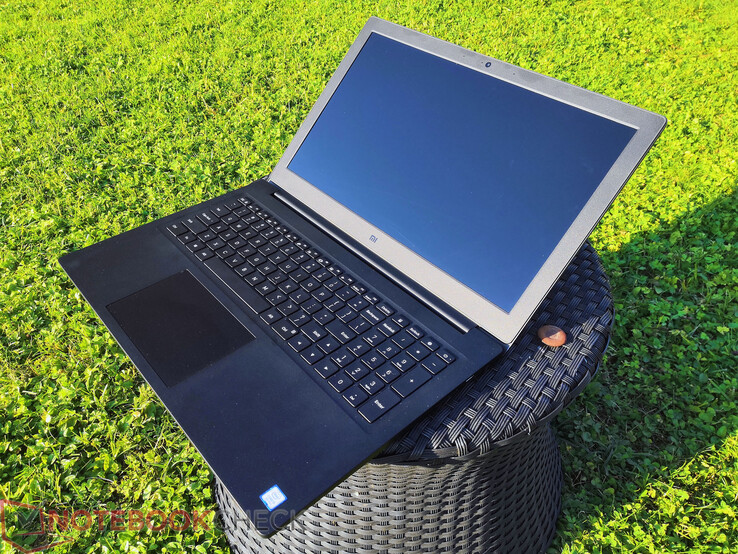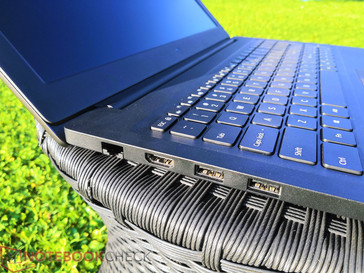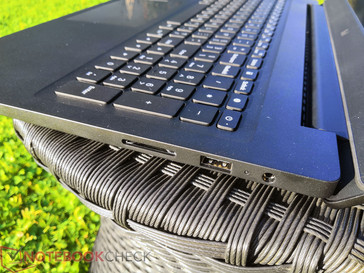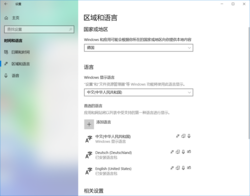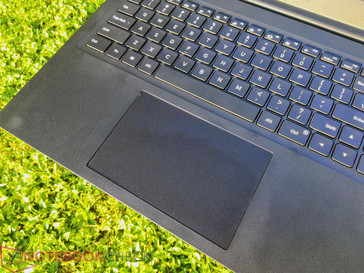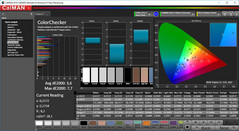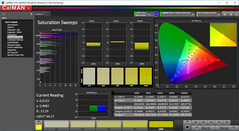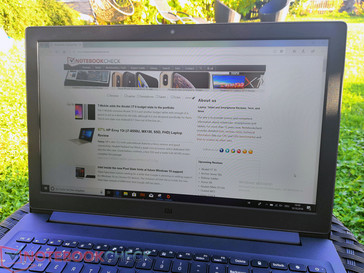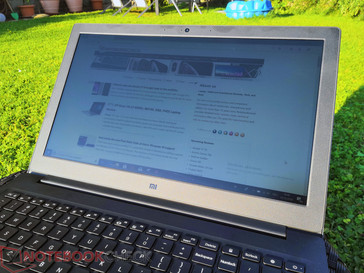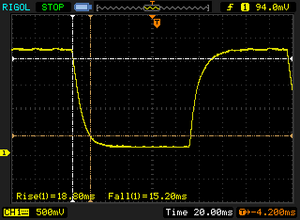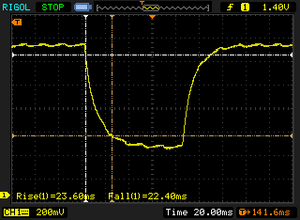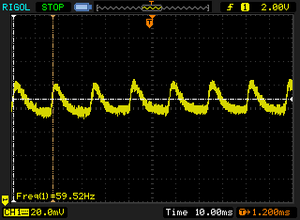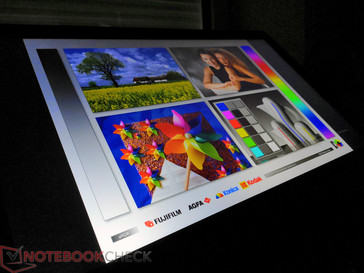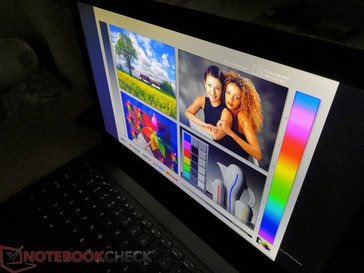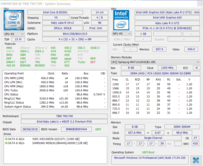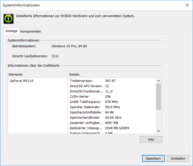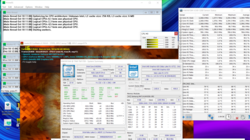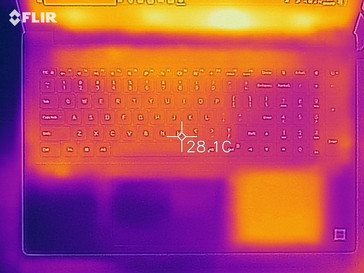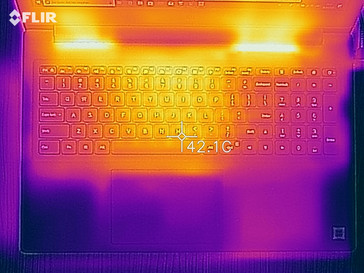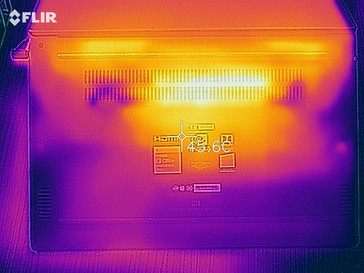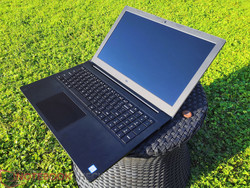Xiaomi Mi Notebook 15.6 (8250U, MX110) Laptop Review

Xiaomi, which is pronounced “Shao-Mi”, is already known around the world by technology enthusiasts for its Mi notebooks and smartphones, which have proven themselves in countless reviews and often score highly for being excellent value for money. Historically, Xiaomi devices have only been available to import from China and have limited, if any, warranty coverage. Often the only option of getting a Xiaomi device repaired is to send the device back to China, which is rather unpalatable. However, Xiaomi has slowly ventured into Europe, opening shops in Spain and then Austria. With that said, while the Mi Notebook Air is available in Europe, the Mi Notebook 15.6 is currently only available from import suppliers like Geekbuying, from whom we bought our review device. Xiaomi Germany is merely a website and online shop that lists Mi smartphones and accessories rather than one which sells them.
We can currently find three variants of the Mi Notebook 15.6 on Xiaomi’s Chinese website. The cheapest is the E58504D1D, which has an Intel Core i5-8250U processor and 4 GB of RAM. The next variant carries the same model number but has 8 GB of RAM, while the E58714D1D is the most expensive option with an Intel Core i7-8550U processor and 8 GB of RAM. All three variants have the same 128 GB SSD, 1 TB HDD and Nvidia GeForce MX110 GPU. Prices at the time of writing vary between 550 Euros (~$633) and 750 Euros (~$863).
Our test device is the E58514D1D with 8 GB RAM, which falls into either our office or low-end multimedia segments and cost 570 Euros (~$656). Xiaomi’s aggressive pricing has made it difficult for us to find equivalent devices against which to compare the Mi Notebook 15.6. We have included a short list of our comparison devices below, but the Mi is either cheaper or better-equipped than all of them when comparing their specifications.
- Acer Aspire 3 A315-51 – Core i3-8130U, iGPU, 128 GB SSD, 4 GB RAM, 429 Euros (~$494)
- HP 15 – Core i5-8250U, GeForce MX110, 256 GB SSD, 8GB RAM, 649 Euros (~$747)
- Lenovo IdeaPad 330s – Core i5-8250U, iGPU, 1 TB HDD, 16 GB Intel Optane Memory, 8 GB RAM, 550 Euros (~$633)
Case
The Mi Notebook 15.6 has, as its name indicates, a 15.6-inch display. Our test device has a black plastic case and an aluminum display lid. The styling is as minimal as other Xiaomi laptops with the only branding being a Mi logo below the display and on the underside of the device.
The plastic parts all have a slightly textured, roughened feel to them and cannot be mistaken for anything but plastic. The case is sturdy though and did not creak or twist regardless of how much pressure we applied. The craftsmanship is good too, although there is a gap between the back corner of one of the edges and the bottom plate. Overall, it is obvious the price bracket in which the Mi Notebook 15.6 sits, but the case does not look or feel cheap.
Xiaomi has opted not to use comparatively large display bezels though, which makes our test device one of the largest in our comparison table at 38.2 cm wide and 25.3 cm deep. The device weighs 2.2 kg, which is also heavier than many of our comparison devices. However, it is only 21 mm thick, which is on par with its competitors. We would recommend a compact 14-inch or smaller device if you frequently carry your laptop with you and use it on the move as the Mi Notebook 15.6 is rather cumbersome.
Connectivity
The Mi Notebook 15.6 has a limited selection of ports, but Xiaomi has spaced them out well along the rear left and right sides of the device. Our test device has an RJ45 Gigabit Ethernet port, an HDMI port, two USB 3.0 Type-A ports and a headphone jack on its left-hand side. The Notebook 15.6’s offering is rounded off by a USB 2.0 Type-A port and an SD card reader on its right-hand side.
SD Card reader
We tested the Mi Notebook 15.6’s SD card reader, as we always do, with our Toshiba Exceria SDXC 64 GB UHD-II reference card. The results are rather underwhelming, with our test device averaging below 30 MB/s in both tests. These speeds indicate that the reader operates at USB 2.0 rather than the faster USB 3.0, but then so do our equivalently priced comparison devices. The SD card reader is fast enough for occasionally transferring data like holiday photos, but we would suggest looking for a device with a USB 3.0 SD card reader if you regularly transfer large amounts of data between your laptop and portable storage.
| SD Card Reader | |
| average JPG Copy Test (av. of 3 runs) | |
| Acer Aspire 3 A315-51-30YA (Toshiba Exceria Pro SDXC 64 GB UHS-II) | |
| Lenovo ThinkPad E580-20KSCTO1WW (Toshiba Exceria Pro M501) | |
| Acer Aspire 5 A515-51G-509A (Toshiba Exceria Pro M510 microSD) | |
| Average of class Office (22.4 - 198.5, n=28, last 2 years) | |
| Acer Swift 3 SF315-41G-R6BR (Toshiba Exceria Pro SDXC 64 GB UHS-II) | |
| HP 15-da0405ng (Toshiba Exceria Pro SDXC 64 GB UHS-II) | |
| Acer TravelMate P2510-G2-MG-50WE (Toshiba Exceria Pro SDXC 64 GB UHS-II) | |
| Lenovo IdeaPad 330S-15IKB-81F500N5GE (Toshiba Exceria Pro SDXC 64 GB UHS-II) | |
| Xiaomi Mi Notebook 15.6 (E58514D1D) (Toshiba Exceria Pro SDXC 64 GB UHS-II) | |
| Xiaomi Mi Notebook Pro i5 | |
| maximum AS SSD Seq Read Test (1GB) | |
| Lenovo ThinkPad E580-20KSCTO1WW (Toshiba Exceria Pro M501) | |
| Acer Aspire 5 A515-51G-509A (Toshiba Exceria Pro M510 microSD) | |
| Average of class Office (25 - 249, n=26, last 2 years) | |
| Acer Swift 3 SF315-41G-R6BR (Toshiba Exceria Pro SDXC 64 GB UHS-II) | |
| Xiaomi Mi Notebook 15.6 (E58514D1D) (Toshiba Exceria Pro SDXC 64 GB UHS-II) | |
| Acer TravelMate P2510-G2-MG-50WE (Toshiba Exceria Pro SDXC 64 GB UHS-II) | |
| Xiaomi Mi Notebook Pro i5 | |
Communication
A Realtek 8821CE module handles Wi-Fi and Bluetooth. The 8821CE is a cheap chip with a below-average performance. Our test device’s Wi-Fi performance is uninspiring with around 50% slower transmission speeds than our fastest comparison device. The Mi Notebook 15.6 finished higher than the HP 15 and Lenovo IdeaPad 330s-15IKB in the iperf3 Client transmission test but bottom of our other Wi-Fi test.
Software
The Mi Notebook 15.6 comes with a Chinese language version of Windows 10 Home 64-bit when bought from Geekbuying. The OS only supports Chinese, which is a stumbling block if you speak other languages. Fortunately, there are two remedies to this which we will outline below.
The first option is to buy a Windows 10 64-bit key, which costs around 5 Euros (~$5.75) on eBay. The main advantage of this method is that you upgrade your existing system without having to reinstall Windows. Additionally, the upgraded OS retains all existing hardware drivers, so should not run into any hardware issues with this method. However, navigating to the correct menu option to enter a new product key in Chinese is tricky. We would recommend having a second computer on hand that is set to your desired language to act as a guide through the Chinese version of Windows 10.
This solution is not perfect though. Single text elements, like the Windows login, remain in Chinese even after downloading another Windows 10 language pack and setting that as the OS’ default language.
The second option is to reinstall Windows 10. You will need a Windows 10 key for this method too, but you must also create a bootable USB installer in your desired language on another computer. You will then need to alter your device’s boot sequence to boot from the USB rather than the SSD. The main disadvantage to this method is that you may need to manually install some device drivers that could be tricky to find. There are YouTube videos that give step-by-step instructions on this method though. While this method may be more time consuming, it does completely remove all Chinese text from the OS.
We chose method one for our review so that we could retain our test device’s original hardware drivers. This eliminates any potential driver-related abnormalities that may have occurred during testing had we manually installed some drivers.
Maintenance
The Mi Notebook 15.6 is relatively easy to maintain. The plastic bottom plate is secured by nine Phillips screws and several plastic hooks. We would recommend prying open the case with a plastic pry tool so that you do not damage the hooks. Removing the bottom plate reveals the two fans, the screwed-in battery, the M.2 SSD slot and the 2.5-inch drive bay among other components. All these components are removable, but strangely we could not find the RAM. It is neither visible on the motherboard nor hidden behind a metal cover.
Warranty
A warranty replacement or repair is a complicated experience. Xiaomi provides no manufacturer’s warranty for the imported device and the warranty offered by import suppliers tends to be for one year with numerous caveats. Moreover, the device must be sent back to China for repair, which is a lengthy and expensive process. In short, the Mi Notebook 15.6’s warranty options are extremely unattractive. Please see our Guarantees, Return policies and Warranties FAQ for country-specific information.
Input Devices
Keyboard
The Mi Notebook 15.6 has a keyboard that is inherently different from the ones that we have seen on the Mi Notebook Pro and the Mi Gaming Notebook. The keyboard has chiclet keys and also has a number pad, the inclusion of which we welcome as it adds to the functionality of the device. The number pad is also befitting of the Mi Notebook 15.6’s potential use as an office notebook too.
The key sizes are regular except for the single-line enter key, but all keys have a noticeable pressure point and a pleasant stroke to them. The keyboard is quiet too regardless of how fast you type. There is no backlight though.
Moreover, the keyboard only comes with a QWERTY layout. This is fine if you speak English, but it will take some time to get used to the different key layouts if you typically type on different language keyboards. German-speaking users may find the change frustrating as the Z and Y keys are inverted and some symbols are assigned to different keys.
Trackpad
The Mi Notebook 15.6 has a large 12.7 x 8.4 centimeter glass trackpad that has a frosted or matte finish. The trackpad is responsive and smooth enough to freely slide your finger across it and perform multi-finger gestures. There are no dedicated mouse buttons, but then this makes sense with Xiaomi’s ethos of minimalist design. The Mi Notebook 15.6 has a mechanical click within the lower-third of the trackpad instead, which has first-class pressure resistance and acoustic feedback. In our opinion, the Mi Notebook 15.6 has one of the best trackpads of any device at this price point and beyond.
Display
Our test device has a BOE Technology Group display that carries the model number BOE07C5 NV156FHM-N42. The 15.6-inch IPS display has a 1920x1080 resolution, which equates to a pixel density of 141 PPI. According to our comparison table, our test device’s display is akin to the ones in the Mi Notebook Pro and Mi Gaming Laptop, which both carry the model number BOE0747 NV156FHM-N61.
The display reaches a maximum brightness of 280 cd/m² at its centre, according to X-Rite i1Pro 2, with an average maximum brightness of 267 cd/m² across the entire panel. Our test device has a comparatively low black value at 0.2 cd/m², which results in an impressive 1,400:1 contrast ratio. Moreover, the display has a matte finish, which diffuses reflections and generally improves readability. In short, the Mi Notebook 15.6 has a display that we would usually expect to see in a 700-Euro to 800-Euro (~$805 to ~$921) laptop and not at this price point.
| |||||||||||||||||||||||||
Brightness Distribution: 85 %
Center on Battery: 280 cd/m²
Contrast: 1400:1 (Black: 0.2 cd/m²)
ΔE ColorChecker Calman: 5 | ∀{0.5-29.43 Ø4.78}
calibrated: 3.6
ΔE Greyscale Calman: 3.7 | ∀{0.09-98 Ø5}
63.6% sRGB (Calman 2D)
59.26% sRGB (Argyll 1.6.3 3D)
38.09% AdobeRGB 1998 (Argyll 1.6.3 3D)
41.54% AdobeRGB 1998 (Argyll 3D)
59.6% sRGB (Argyll 3D)
40.21% Display P3 (Argyll 3D)
Gamma: 2.08
CCT: 7309 K
| Xiaomi Mi Notebook 15.6 (E58514D1D) BOE07C5 (NV156FHM-N42), , 1920x1080, 15.6" | Xiaomi Mi Notebook Pro i5 BOE0747 NV156FHM-N61, , 1920x1080, 15.6" | Xiaomi Mi Gaming Laptop 7300HQ 1060 BOEhydis NV156FHM-N61 (BOE0747), , 1920x1080, 15.6" | Xiaomi Mi Notebook Air 13.3 2018 SHARP LQ133M1JW15, , 1920x1080, 13.3" | Acer Aspire 5 A515-51G-509A Chi Mei (CMN15D5), , 1920x1080, 15.6" | Lenovo ThinkPad E580-20KSCTO1WW BOE NV156FHM-N49, , 1920x1080, 15.6" | Lenovo IdeaPad 330S-15IKB-81F500N5GE BOE0700, , 1920x1080, 15.6" | Acer Aspire 3 A315-51-30YA Chi Mei N156HGA-EAB, , 1920x1080, 15.6" | HP 15-da0405ng BOE0687, , 1920x1080, 15.6" | Acer TravelMate P2510-G2-MG-50WE Chi Mei CMN15D3, , 1920x1080, 15.6" | |
|---|---|---|---|---|---|---|---|---|---|---|
| Display | 55% | 55% | 64% | -1% | -1% | 0% | -1% | 6% | ||
| Display P3 Coverage (%) | 40.21 | 66.5 65% | 66.6 66% | 67.8 69% | 39.83 -1% | 39.85 -1% | 40.23 0% | 39.52 -2% | 42.27 5% | |
| sRGB Coverage (%) | 59.6 | 86.9 46% | 87.3 46% | 91.6 54% | 58.5 -2% | 58.8 -1% | 60 1% | 59.4 0% | 63.5 7% | |
| AdobeRGB 1998 Coverage (%) | 41.54 | 63.5 53% | 63.8 54% | 69.8 68% | 41.15 -1% | 41.17 -1% | 41.6 0% | 40.83 -2% | 43.69 5% | |
| Response Times | -2% | -19% | 14% | 33% | -8% | 7% | 20% | 37% | 10% | |
| Response Time Grey 50% / Grey 80% * (ms) | 46 ? | 47.9 ? -4% | 53.2 ? -16% | 39.6 ? 14% | 43.3 ? 6% | 48.4 ? -5% | 44 ? 4% | 40 ? 13% | 41 ? 11% | 40 ? 13% |
| Response Time Black / White * (ms) | 34 ? | 33.7 ? 1% | 41.6 ? -22% | 29.3 ? 14% | 13.8 ? 59% | 37.6 ? -11% | 31 ? 9% | 25 ? 26% | 13 ? 62% | 32 ? 6% |
| PWM Frequency (Hz) | 60 ? | 21800 ? | 21550 ? | 220 ? | 25970 ? | 22030 ? | 86000 ? | 25000 ? | 29000 ? | 25000 ? |
| Screen | 4% | 8% | -7% | -103% | -24% | -21% | -70% | -65% | 9% | |
| Brightness middle (cd/m²) | 280 | 296 6% | 283 1% | 370 32% | 246 -12% | 292 4% | 283 1% | 185 -34% | 176 -37% | 259 -7% |
| Brightness (cd/m²) | 267 | 288 8% | 269 1% | 355 33% | 225 -16% | 272 2% | 252 -6% | 166 -38% | 164 -39% | 230 -14% |
| Brightness Distribution (%) | 85 | 89 5% | 87 2% | 90 6% | 81 -5% | 84 -1% | 75 -12% | 76 -11% | 69 -19% | 82 -4% |
| Black Level * (cd/m²) | 0.2 | 0.32 -60% | 0.23 -15% | 0.23 -15% | 0.51 -155% | 0.3 -50% | 0.63 -215% | 0.37 -85% | 0.31 -55% | 0.19 5% |
| Contrast (:1) | 1400 | 925 -34% | 1230 -12% | 1609 15% | 482 -66% | 973 -30% | 449 -68% | 500 -64% | 568 -59% | 1363 -3% |
| Colorchecker dE 2000 * | 5 | 4.3 14% | 4.68 6% | 6.9 -38% | 11 -120% | 5.8 -16% | 4.02 20% | 11.26 -125% | 11.4 -128% | 3.13 37% |
| Colorchecker dE 2000 max. * | 7.9 | 8.7 -10% | 8 -1% | 12.2 -54% | 32.4 -310% | 22.4 -184% | 8.77 -11% | 18.65 -136% | 19.76 -150% | 7.81 1% |
| Colorchecker dE 2000 calibrated * | 3.6 | 2.5 31% | 1.4 61% | 4.6 -28% | 4.03 -12% | 2.99 17% | 3.09 14% | |||
| Greyscale dE 2000 * | 3.7 | 3 19% | 4.32 -17% | 7.4 -100% | 11.6 -214% | 2.3 38% | 0.8 78% | 11.56 -212% | 12.75 -245% | 1.42 62% |
| Gamma | 2.08 106% | 2.1 105% | 2.36 93% | 1.76 125% | 1.91 115% | 2.12 104% | 2.35 94% | 2.1 105% | 2.59 85% | 2.36 93% |
| CCT | 7309 89% | 7100 92% | 7612 85% | 7529 86% | 11807 55% | 6223 104% | 6552 99% | 11788 55% | 14899 44% | 6391 102% |
| Color Space (Percent of AdobeRGB 1998) (%) | 38.09 | 56.83 49% | 57 50% | 37.6 -1% | 38 0% | 38 0% | 38 0% | 40 5% | ||
| Color Space (Percent of sRGB) (%) | 59.26 | 86.86 47% | 87 47% | 58 -2% | 58 -2% | 60 1% | 59 0% | 63 6% | ||
| Total Average (Program / Settings) | 19% /
14% | 15% /
14% | 24% /
11% | -35% /
-78% | -11% /
-17% | -5% /
-14% | -17% /
-44% | -10% /
-40% | 8% /
9% |
* ... smaller is better
We also measured the display’s color accuracy using a photo spectrometer and CalMAN analysis software. The Mi Notebook 15.6 has poor color accuracy when tested at factory settings with high Delta E deviations for colors and gray tones when compared to the sRGB reference color space. We managed to improve some values with additional calibration, but color Delta E deviations only reduced to an average of 3.6 and a maximum of 7.7. We have included our calibrated ICC profile in the display information above our comparison table should you wish to use it.
Our test device is only 59% sRGB and 38% Adobe RGB accurate, which makes the Mi Notebook 15.6 unsuitable for image or video-editing. These values are insignificant for the average user though. Colors look vivid in images and videos thanks to the display’s high contrast ratio and low black value.
The Mi Notebook 15.6 is suitable to use outdoors too, but we would recommend avoiding direct sunlight. The display is not bright enough to handle bright sunshine even with its matte finish.
Display Response Times
| ↔ Response Time Black to White | ||
|---|---|---|
| 34 ms ... rise ↗ and fall ↘ combined | ↗ 15.2 ms rise | |
| ↘ 18.8 ms fall | ||
| The screen shows slow response rates in our tests and will be unsatisfactory for gamers. In comparison, all tested devices range from 0.1 (minimum) to 240 (maximum) ms. » 90 % of all devices are better. This means that the measured response time is worse than the average of all tested devices (20.2 ms). | ||
| ↔ Response Time 50% Grey to 80% Grey | ||
| 46 ms ... rise ↗ and fall ↘ combined | ↗ 22.4 ms rise | |
| ↘ 23.6 ms fall | ||
| The screen shows slow response rates in our tests and will be unsatisfactory for gamers. In comparison, all tested devices range from 0.165 (minimum) to 636 (maximum) ms. » 78 % of all devices are better. This means that the measured response time is worse than the average of all tested devices (31.6 ms). | ||
Screen Flickering / PWM (Pulse-Width Modulation)
| Screen flickering / PWM detected | 60 Hz | ≤ 100 % brightness setting | |
The display backlight flickers at 60 Hz (worst case, e.g., utilizing PWM) Flickering detected at a brightness setting of 100 % and below. There should be no flickering or PWM above this brightness setting. The frequency of 60 Hz is very low, so the flickering may cause eyestrain and headaches after extended use. In comparison: 53 % of all tested devices do not use PWM to dim the display. If PWM was detected, an average of 8098 (minimum: 5 - maximum: 343500) Hz was measured. | |||
Our test device has between 34 and 46-millisecond response times, which is typical for IPS panels in budget devices. These response times should not concern a regular user and gamers are not the Mi Notebook 15.6’s target audience anyway. However, what may bother many users is the display flicker, which we measured at 60 Hz. It is worth keeping in mind that this is not a typical pulse-width modulation (PWM) signal either, but those who are PWM-sensitive could suffer from eye strain or headaches when using the Mi Notebook 15.6 for an extended period.
The Mi Notebook 15.6 has strong viewing angles thanks to its IPS display. We noticed no brightness or color distortions even at acute angles, with readability issues at oblique angles only occurring when we used the device outside.
Performance
The Mi Notebook 15.6 is currently available with either a Core i5-8250U or a Core i7-8550U processor and 4/8 GB RAM. We would recommend choosing the 8 GB option as the RAM is not upgradable. The Core i5-8250U will be powerful enough for most users, while the extra power of the Core i7-8550U may only be noticeable in a few programs, if at all.
Xiaomi has equipped the device with a 128 GB M.2-2280 SSD and a 1 TB 2.5-inch SATA HDD to save costs. The inclusion of cheaper storage is a good solution for providing plenty of storage at an affordable price. However, the faster SSD will fill up quickly while moving programs to the HDD negates the speed improvements associated with the SSD.
Processor
The Core i5-8250U is no stranger to our test lab. The CPU is a quad-core chip that has up to eight simultaneous threads thanks to Intel Hyper-Threading and a thermal design power (TDP) of 15 W. OEMs have used the CPU extensively in thin and light notebooks, but inadequate cooling often prevents the CPU from being used to its full potential. The Mi Notebook 15.6 has no such issues though as it is 21 mm thick, has two fans and it has a larger case for better heat dissipation.
The Mi Notebook 15.6 delivers first-class performance in Cinebench R15. We ran the multithreaded benchmark on a loop 30 times, during which our test device initially scored 665 points. Only a handful of equally equipped devices can crack the 700-point mark, while many Core i7-8550U-powered devices cannot match the Mi Notebook 15.6, as our comparison chart demonstrates. Performance dropped by 10% in the second run of the benchmark and remained steady thereafter but these scores still put the Mi Notebook 15.6 in second place overall and well ahead of many of our other comparison devices. We would recommend the device based on its Core i5-8250U performance alone, it is that good.
Unfortunately, it was not possible for us to get Intel Extreme Tuning Utility (Intel XTU) running on our test device for further undervolting and TDP testing. We gave up trying to run the program after repeated aborted attempts with the utility stating that we were trying to run it on an unsupported platform.
System Performance
The Mi Notebook 15.6 fares well against its equivalently priced competitors in system performance benchmarks and is only 15% behind the considerably more expensive Mi Notebook Pro. The latter scores more in PCMark 10 because of its faster SSD and more powerful MX150 GPU. The Notebook Pro is also aimed at multimedia enthusiasts, which is a different and more-demanding target market to the office and simple multimedia uses for which the Mi Notebook 15.6 is intended. Overall, the Mi Notebook 15.6 has solid and satisfactory system performance.
Our test device also performs equally well on battery power as it does on mains power when running 3DMark 11.
| PCMark 8 Home Score Accelerated v2 | 3153 points | |
| PCMark 8 Work Score Accelerated v2 | 4544 points | |
| PCMark 10 Score | 3194 points | |
Help | ||
Storage Devices
A look at our storage benchmarks confirms that the Mi Notebook 15.6 is an entry-level device. Our test device has a Samsung PM871 SSD and a Western Digital Blue SATA HDD which runs at 5,400 RPM. The PM871 is no longer a comparatively quick SSD but still delivers adequate performance for a 570-Euro (~$656) device. The Mi Notebook Pro has faster transfer speeds thanks to its newer Samsung PM961 NVMe SSD, but it cannot fully exploit the potential of the drive, about which we discuss in our review. The HP 15 takes the crown for best storage option of the budget notebooks that we are comparing the Mi Notebook 15.6 against thanks to its fast NVMe SSD.
As mentioned earlier, the included 128 GB SSD will fill up quickly with general use. We would recommend switching to at least a 256 GB SSD, which costs well under 100 Euros (~$115), particularly if you plan to reinstall Windows.
| Xiaomi Mi Notebook 15.6 (E58514D1D) Samsung PM871b MZNLN128HAHQ | Acer Aspire 5 A515-51G-509A SK Hynix HFS256G39TND-N210A | Acer Swift 3 SF315-41G-R6BR Intel SSD 600p SSDPEKKW256G7 | Acer TravelMate P2510-G2-MG-50WE SK Hynix HFS256G39TND-N210A | Lenovo ThinkPad E580-20KSCTO1WW Toshiba KBG30ZMT128G | Xiaomi Mi Notebook Pro i5 Samsung PM961 MZVLW256HEHP | Lenovo IdeaPad 330S-15IKB-81F500N5GE | Acer Aspire 3 A315-51-30YA Kingston RBUSNS8180S3128GI1 | HP 15-da0405ng SK Hynix BC501 NVMe 256 GB | Average Samsung PM871b MZNLN128HAHQ | |
|---|---|---|---|---|---|---|---|---|---|---|
| CrystalDiskMark 5.2 / 6 | -0% | 67% | -9% | 1% | 129% | 12% | 6% | 74% | 4% | |
| Write 4K (MB/s) | 77.3 | 80.9 5% | 112 45% | 71.8 -7% | 81.8 6% | 150 94% | 101.4 31% | 97.6 26% | 82.8 ? 7% | |
| Read 4K (MB/s) | 29.77 | 28.23 -5% | 32.44 9% | 21.23 -29% | 33.33 12% | 36 21% | 26.75 -10% | 39.08 31% | 33 ? 11% | |
| Write Seq (MB/s) | 442.5 | 266.3 -40% | 598 35% | 257.1 -42% | 131.1 -70% | 1057 139% | 158.1 -64% | 383 -13% | 571 29% | 402 ? -9% |
| Read Seq (MB/s) | 442.7 | 495.5 12% | 1157 161% | 476.3 8% | 910 106% | 1074 143% | 892 101% | 432.4 -2% | 1110 151% | 500 ? 13% |
| Write 4K Q32T1 (MB/s) | 173.8 | 255 47% | 255.5 47% | 202.6 17% | 122.1 -30% | 429 147% | 162.2 -7% | 292.1 68% | 235.7 36% | 192.2 ? 11% |
| Read 4K Q32T1 (MB/s) | 233.6 | 288.3 23% | 287.5 23% | 282 21% | 199.3 -15% | 441 89% | 320.4 37% | 225.1 -4% | 297 27% | 295 ? 26% |
| Write Seq Q32T1 (MB/s) | 510 | 265.6 -48% | 594 16% | 265.6 -48% | 133 -74% | 1283 152% | 160.2 -69% | 382.8 -25% | 812 59% | 392 ? -23% |
| Read Seq Q32T1 (MB/s) | 530 | 556 5% | 1568 196% | 559 5% | 935 76% | 1838 247% | 933 76% | 526 -1% | 1742 229% | 491 ? -7% |
Graphics Card
It is exciting to see Xiaomi equip the Mi Notebook 15.6 with an Nvidia GeForce MX110, not because it is particularly powerful, but because we have only tested a handful of notebooks with it. The MX110 is based on the GeForce 920MX and so is manufactured on Nvidia’s Maxwell architecture. The MX110 is between 20% and 80% faster than the Intel UHD Graphics 620, depending on the benchmark, with the Nvidia GeForce MX130 a further 35% ahead. Moreover, the Nvidia GeForce MX150 in the Mi Notebook Pro has around double the power of the MX110. The Radeon RX 540 is also considerably more powerful than the GPU in our test device, but its better benchmark scores do not translate into better game performance as we will discuss below.
The Mi Notebook 15.6 is well suited for office and multimedia applications thanks to its MX110 GPU, but it will struggle with demanding games.
| 3DMark 11 Performance | 2400 points | |
| 3DMark Cloud Gate Standard Score | 10015 points | |
| 3DMark Fire Strike Score | 1647 points | |
Help | ||
Gaming Performance
The “smallest” GPU in Nvidia’s current portfolio is powerful enough for playing a few modern games at reduced graphics. Titles like FIFA 18, Team Fortress 2 and Rocket League are playable at 1080p. By contrast, more complex titles like Fortnite, Farming Simulator 17 or Overwatch only play smoothly at reduced graphics. Expectedly, the GeForce MX150 performs significantly better than the MX110 in games. However, the entry-level Nvidia GPU outperforms the Radeon RX 540 despite the latter scoring considerably better in graphics card benchmarks.
We tested the Mi Notebook 15.6 extensively with FIFA 18, with our test device averaging 47.5 FPS at maximum graphics when playing at 1080p. Replays or video clips run at a reduced frame rate though. Equally, Overwatch is playable but only at reduced details and at a resolution low enough to guarantee high frame rates.
| Overwatch | |
| 1280x720 Low (Render Scale 100 %) AA:FX AF:1x | |
| Xiaomi Mi Notebook Pro i5 | |
| Xiaomi Mi Notebook 15.6 (E58514D1D) | |
| Average NVIDIA GeForce MX110 (87 - 91.3, n=2) | |
| HP 15-da0405ng | |
| Acer Swift 3 SF315-41G-R6BR | |
| 1366x768 Medium (Render Scale 100 %) AA:FX AF:2x | |
| Xiaomi Mi Notebook Pro i5 | |
| Xiaomi Mi Notebook 15.6 (E58514D1D) | |
| Average NVIDIA GeForce MX110 (60.4 - 67.9, n=2) | |
| HP 15-da0405ng | |
| Acer Swift 3 SF315-41G-R6BR | |
| 1920x1080 High (Render Scale 100 %) AA:SM AF:4x | |
| Xiaomi Mi Notebook Pro i5 | |
| Acer Swift 3 SF315-41G-R6BR | |
| Xiaomi Mi Notebook 15.6 (E58514D1D) | |
| Average NVIDIA GeForce MX110 (27.9 - 28.1, n=2) | |
| HP 15-da0405ng | |
| 1920x1080 Epic (Render Scale 100 %) AA:SM AF:16x | |
| Xiaomi Mi Notebook Pro i5 | |
| Acer Swift 3 SF315-41G-R6BR | |
| HP 15-da0405ng | |
| Average NVIDIA GeForce MX110 (15.5 - 15.8, n=2) | |
| Xiaomi Mi Notebook 15.6 (E58514D1D) | |
| Fortnite | |
| 1280x720 Low Preset | |
| Honor Magicbook | |
| Acer Swift 3 SF315-41G-R6BR | |
| HP 15-da0405ng | |
| Xiaomi Mi Notebook 15.6 (E58514D1D) | |
| Average NVIDIA GeForce MX110 (62.7 - 66.1, n=3) | |
| Honor Magicbook | |
| HP Envy 13-ah0003ng | |
| Fujitsu Lifebook A357-A3570MPH06DE | |
| 1920x1080 Medium Preset | |
| Honor Magicbook | |
| HP Envy 13-ah0003ng | |
| Average NVIDIA GeForce MX110 (19.9 - 41.8, n=3) | |
| Honor Magicbook | |
| Xiaomi Mi Notebook 15.6 (E58514D1D) | |
| Acer Swift 3 SF315-41G-R6BR | |
| HP 15-da0405ng | |
| Fujitsu Lifebook A357-A3570MPH06DE | |
| 1920x1080 High Preset | |
| Xiaomi Mi Gaming Laptop 7300HQ 1060 | |
| Honor Magicbook | |
| HP Envy 13-ah0003ng | |
| Honor Magicbook | |
| Xiaomi Mi Notebook 15.6 (E58514D1D) | |
| Average NVIDIA GeForce MX110 (14.1 - 17.3, n=3) | |
| HP 15-da0405ng | |
| Acer Swift 3 SF315-41G-R6BR | |
| 1920x1080 Epic Preset | |
| Xiaomi Mi Gaming Laptop 7300HQ 1060 | |
| Honor Magicbook | |
| HP Envy 13-ah0003ng | |
| Xiaomi Mi Notebook 15.6 (E58514D1D) | |
| HP 15-da0405ng | |
| Average NVIDIA GeForce MX110 (9.3 - 12.8, n=3) | |
| Honor Magicbook | |
| Acer Swift 3 SF315-41G-R6BR | |
Emissions
Fan Noise
The Mi Notebook 15.6 is largely silent during office tasks and Internet browsing, except for the HDD which whirrs at around 30 dB(A). The fans will spin up even for short bursts of high CPU usage. Predictably, the fans get louder when the device operates under sustained load, reaching a maximum of 45.3 dB(A). This is relatively loud, but our test device has no coil whine or other unpleasant noises, which is a plus.
Noise level
| Idle |
| 29.9 / 30.6 / 35 dB(A) |
| HDD |
| 30.6 dB(A) |
| Load |
| 38.8 / 45.3 dB(A) |
 | ||
30 dB silent 40 dB(A) audible 50 dB(A) loud |
||
min: | ||
Temperature
Our test device is relatively cool at idle with surface temperatures averaging 25.1 °C on the top case and 26.7 °C on the bottom. Subjectively, only the area around the HDD feels somewhat warm to the touch at idle.
It is a different story under load though where surface temperatures rise drastically. Importantly, the palm rest still feels cool to the touch, but the area around the fan vents on the bottom case reaches an unpleasantly hot 58.8 °C. We would strongly recommend against using the device on your lap when you are pushing it hard. It appears that Xiaomi is willing to accept high case temperatures to ensure good performance and relatively quiet fans most of the time.
A look inside shows that our test device can only sustain peak CPU performance for a short time. The CPU core temperature quickly reaches critical levels at which point the frequency drops from 3.4 GHz to 2.3-2.4 GHz. The core temperature then settles at just under 80 °C. We suspect that we could improve our test device’s thermal performance by undervolting and repasting the CPU, but Intel XTU will not run. The GPU also sits between 70 °C and 75 °C during a stress test, but it can continuously maintain a clock speed above 1 GHz without thermal throttling.
Overall, the Mi Notebook 15.6 is easy to use even under laboratory conditions, but we would recommend using it on a solid surface during resource-heavy tasks to maintain optimum air circulation.
(-) The maximum temperature on the upper side is 48.2 °C / 119 F, compared to the average of 34.3 °C / 94 F, ranging from 21.2 to 62.5 °C for the class Office.
(-) The bottom heats up to a maximum of 58.8 °C / 138 F, compared to the average of 36.8 °C / 98 F
(+) In idle usage, the average temperature for the upper side is 25.1 °C / 77 F, compared to the device average of 29.5 °C / 85 F.
(+) The palmrests and touchpad are cooler than skin temperature with a maximum of 27.4 °C / 81.3 F and are therefore cool to the touch.
(±) The average temperature of the palmrest area of similar devices was 27.6 °C / 81.7 F (+0.2 °C / 0.4 F).
Speakers
The Mi Notebook 15.6 has two speakers on the underside of the device. The speakers have AKG branding, which is a brand known to audiophiles. However, the sound quality does not meet expectations and the maximum volume is only 76.6 dB(A), which is hardly loud enough to fill a medium-sized room. Audio lacks bass and the speakers’ positioning means that sound reverberates off whatever is underneath the device. In practice, the sound gets muffled when using the device on your lap or on a soft surface. We would recommend placing the device on a solid surface when playing music or audio to ensure optimum sound quality.
The comparison diagram below shows the lack of the speakers’ low and high-frequency tones.
Xiaomi Mi Notebook 15.6 (E58514D1D) audio analysis
(±) | speaker loudness is average but good (76.6 dB)
Bass 100 - 315 Hz
(±) | reduced bass - on average 10.4% lower than median
(±) | linearity of bass is average (12.9% delta to prev. frequency)
Mids 400 - 2000 Hz
(±) | higher mids - on average 6.7% higher than median
(+) | mids are linear (6.3% delta to prev. frequency)
Highs 2 - 16 kHz
(+) | balanced highs - only 3.6% away from median
(±) | linearity of highs is average (8.9% delta to prev. frequency)
Overall 100 - 16.000 Hz
(±) | linearity of overall sound is average (20.3% difference to median)
Compared to same class
» 43% of all tested devices in this class were better, 10% similar, 47% worse
» The best had a delta of 7%, average was 21%, worst was 53%
Compared to all devices tested
» 52% of all tested devices were better, 8% similar, 40% worse
» The best had a delta of 4%, average was 24%, worst was 134%
Apple MacBook 12 (Early 2016) 1.1 GHz audio analysis
(+) | speakers can play relatively loud (83.6 dB)
Bass 100 - 315 Hz
(±) | reduced bass - on average 11.3% lower than median
(±) | linearity of bass is average (14.2% delta to prev. frequency)
Mids 400 - 2000 Hz
(+) | balanced mids - only 2.4% away from median
(+) | mids are linear (5.5% delta to prev. frequency)
Highs 2 - 16 kHz
(+) | balanced highs - only 2% away from median
(+) | highs are linear (4.5% delta to prev. frequency)
Overall 100 - 16.000 Hz
(+) | overall sound is linear (10.2% difference to median)
Compared to same class
» 7% of all tested devices in this class were better, 2% similar, 91% worse
» The best had a delta of 5%, average was 18%, worst was 53%
Compared to all devices tested
» 4% of all tested devices were better, 1% similar, 94% worse
» The best had a delta of 4%, average was 24%, worst was 134%
Power Management
Power Consumption
Our test device consumes between 5.6 W and 8.7 W at idle, which is slightly above average for a 15-inch device with an Intel Core i5-8250U processor. Strikingly, our AMD-powered comparison device consumes considerably more than its Intel-powered counterparts.
The Mi Notebook 15.6 consumes up to 39.9 W under a realistic load when running 3DMark06. That value is around 10 W higher than the ThinkPad E580, which also has a Core i5-8250U. The ThinkPad lacks a dedicated GPU though. More-powerful devices with a GeForce MX130 or GeForce MX150 typically consume around 10 W more than our test device. We also measure a maximum power consumption of 59.9 W during a stress test, which is still within the included 65 W power supply’s limits.
| Off / Standby | |
| Idle | |
| Load |
|
Key:
min: | |
| Xiaomi Mi Notebook 15.6 (E58514D1D) i5-8250U, GeForce MX110, Samsung PM871b MZNLN128HAHQ, LED, 1920x1080, 15.6" | Acer Aspire 5 A515-51G-509A i5-8250U, GeForce MX130, SK Hynix HFS256G39TND-N210A, TN, 1920x1080, 15.6" | Acer Swift 3 SF315-41G-R6BR R5 2500U, Radeon RX 540, Intel SSD 600p SSDPEKKW256G7, IPS, 1920x1080, 15.6" | Acer TravelMate P2510-G2-MG-50WE i5-8250U, GeForce MX130, SK Hynix HFS256G39TND-N210A, IPS, 1920x1080, 15.6" | Lenovo ThinkPad E580-20KSCTO1WW i5-8250U, UHD Graphics 620, Toshiba KBG30ZMT128G, IPS LED, 1920x1080, 15.6" | Xiaomi Mi Notebook Pro i5 i5-8250U, GeForce MX150, Samsung PM961 MZVLW256HEHP, IPS LED, 1920x1080, 15.6" | Dell Latitude 15 3590-K8JP i5-8550U, Radeon 530, Toshiba MQ01ACF050, TN LED, 1920x1080, 15.6" | Lenovo IdeaPad 330S-15IKB-81F500N5GE i5-8250U, UHD Graphics 620, , IPS, 1920x1080, 15.6" | Acer Aspire 3 A315-51-30YA i3-8130U, UHD Graphics 620, Kingston RBUSNS8180S3128GI1, TN LED, 1920x1080, 15.6" | HP 15-da0405ng i5-8250U, GeForce MX110, SK Hynix BC501 NVMe 256 GB, TN LED, 1920x1080, 15.6" | Average NVIDIA GeForce MX110 | Average of class Office | |
|---|---|---|---|---|---|---|---|---|---|---|---|---|
| Power Consumption | -6% | -19% | 9% | 24% | -2% | -29% | 21% | 15% | 14% | 8% | 3% | |
| Idle Minimum * (Watt) | 5.6 | 5.1 9% | 6.9 -23% | 3.3 41% | 3.4 39% | 3.7 34% | 8.2 -46% | 5 11% | 5.4 4% | 3.8 32% | 4.4 ? 21% | 4.54 ? 19% |
| Idle Average * (Watt) | 8.6 | 7.6 12% | 9.6 -12% | 5.6 35% | 6.7 22% | 7.5 13% | 8.4 2% | 7.6 12% | 8.2 5% | 6.2 28% | 7.37 ? 14% | 7.52 ? 13% |
| Idle Maximum * (Watt) | 8.7 | 8.2 6% | 11.8 -36% | 7.8 10% | 7.7 11% | 8 8% | 8.4 3% | 8.6 1% | 8.4 3% | 6.7 23% | 7.63 ? 12% | 8.91 ? -2% |
| Load Average * (Watt) | 39.9 | 49.4 -24% | 50 -25% | 54 -35% | 31.1 22% | 49 -23% | 62.6 -57% | 25.6 36% | 32.2 19% | 40.8 -2% | 40.9 ? -3% | 42.8 ? -7% |
| Witcher 3 ultra * (Watt) | 33.2 | 42.1 -27% | 50.6 -52% | 53.6 -61% | ||||||||
| Load Maximum * (Watt) | 59.9 | 68 -14% | 60 -0% | 63 -5% | 42.9 28% | 55.2 8% | 66.8 -12% | 34 43% | 32.6 46% | 65.2 -9% | 62 ? -4% | 64.3 ? -7% |
* ... smaller is better
Battery Life
There are two important factors concerning battery life: battery capacity and power consumption. The Mi Notebook 15.6 has a 40 Wh battery, which is smaller than the batteries in all our comparison devices. Power consumption is above average at idle too as mentioned above. Our test device lasted just 6 h 40 m in our Wi-Fi battery life test, which puts the Mi Notebook 15.6 at the bottom of our comparison table. The battery can last up to 10 h 13 m when the device is idling, but overall the Mi Notebook 15.6 has much weaker battery life than our comparison devices.
Our test device takes around 90 minutes to charge from flat to 80% with the included 65 W power supply. Charging up to 100% takes another hour for a total of two-and-a-half hours.
| Xiaomi Mi Notebook 15.6 (E58514D1D) i5-8250U, GeForce MX110, 40 Wh | Acer Aspire 5 A515-51G-509A i5-8250U, GeForce MX130, 48 Wh | Acer Swift 3 SF315-41G-R6BR R5 2500U, Radeon RX 540, 48 Wh | Acer TravelMate P2510-G2-MG-50WE i5-8250U, GeForce MX130, 48 Wh | Lenovo ThinkPad E580-20KSCTO1WW i5-8250U, UHD Graphics 620, 45 Wh | Xiaomi Mi Notebook Pro i5 i5-8250U, GeForce MX150, 60 Wh | Dell Latitude 15 3590-K8JP i5-8550U, Radeon 530, 56 Wh | Lenovo IdeaPad 330S-15IKB-81F500N5GE i5-8250U, UHD Graphics 620, 52 Wh | Acer Aspire 3 A315-51-30YA i3-8130U, UHD Graphics 620, 37 Wh | HP 15-da0405ng i5-8250U, GeForce MX110, 41 Wh | Average of class Office | |
|---|---|---|---|---|---|---|---|---|---|---|---|
| Battery runtime | 19% | 5% | 29% | 19% | 55% | 30% | 13% | -18% | 4% | 110% | |
| Reader / Idle (h) | 10.2 | 14.5 42% | 12.1 19% | 14.4 41% | 14.3 40% | 12.6 24% | 22.3 ? 119% | ||||
| H.264 (h) | 7.8 | 8.8 13% | 6.1 -22% | 8.6 10% | 7.3 -6% | 10.5 35% | 14.9 ? 91% | ||||
| WiFi v1.3 (h) | 5.7 | 5.8 2% | 6.7 18% | 8.4 47% | 7 23% | 10 75% | 6.8 19% | 5.8 2% | 4.7 -18% | 5.9 4% | 12.5 ? 119% |
| Load (h) | 2.7 | 1.8 | 2 | 1.6 | 2 | 1.9 | 1.9 | 1.823 ? | |||
| Witcher 3 ultra (h) | 1.4 |
Verdict
Pros
Cons
It is difficult to draw an adequate verdict about the Xiaomi Mi Notebook 15.6. Crucially, the device is currently unavailable in the Western world, which raises numerous warranty-related issues if the device develops a fault. Moreover, the device only comes with a Chinese version of Windows 10, which requires some lengthy changes unless you speak Chinese. These factors alone could put off people who do not want any fuss associated with their laptop.
The device itself is outstanding value for money though. The Mi Notebook 15.6 is made largely of plastic but is well crafted and retains Xiaomi’s minimalist design aesthetic. The keyboard and trackpad are exceptional for a sub-600 Euro (~$690) device too.
On the other hand, the display is a mixed bag. The brightness is good enough for most uses, while the matte finish and high contrast ratio are welcome bonuses. However, the display has comparatively poor color accuracy and color-space coverage.
The Xiaomi Mi Notebook 15.6 is characterized by its attractive price-to-performance ratio. Its current availability only within China will limit the device’s success in Europe and the USA though.
A highlight of the Mi Notebook 15.6 is how well it performs. The Core i5-8250U delivers exceptional performance under sustained load, and the MX110 delivers playable frame rates in modern games despite being Nvidia’s entry-level laptop GPU.
Our test device largely works silently too, but the fans get loud when the system is stressed. Equally, Xiaomi has focused on maintaining peak performance at the expense of high case temperatures.
Overall, the Xiaomi Mi Notebook 15.6 is a great device for the money and one which offers significantly more than other equivalently priced laptops. You may save around 200 Euros (~$230) by buying the Mi Notebook 15.6 compared with other devices that are available worldwide, but the associated warranty risks of importing a device from China may negate the savings for some people.
Xiaomi Mi Notebook 15.6 (E58514D1D)
- 10/12/2018 v6 (old)
J. Simon Leitner




